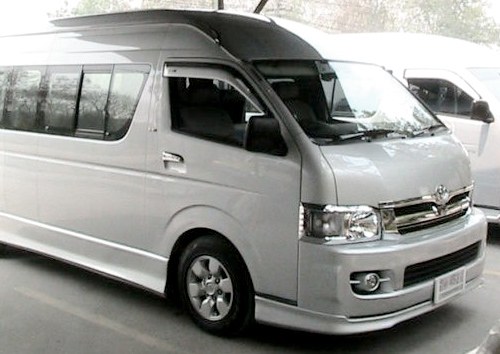Not long ago there were several horrific stories in the local news about school children being left behind on the school bus with disastrous consequences. And who hasn’t seen songtows with young school children on their way to school- either locked into the truck behind bars, or without any barrier preventing them from falling out.
While most international schools will certainly maintain at least the minimum safety standards for their school buses, there are numerous devices and measures available for your school’s transport to be as safe as possible.
The first thing you may want to check out is whether or not the buses have safety features that make them recognizable as school buses, such as amber lights and signs that are clearly marked “school bus” . These signs warn other road users that they can expect the bus to make regular stops. An additional roof light and flashing stop lights at the back of the vehicle signal when the bus is stopping and that children will be getting out, providing more visual alerts to traffic behind the bus.
Some high-tech gadgets have also made their way onto school vans. Modern school vans have detection safety alarms which detect movement inside the bus after it has been locked. Should someone still be inside, the van will sound an alarm and flash its lights. This information can be transmitted to the school or to a bus command center, which can monitor all of the buses on and off the road.
Another high-tech feature that parents will appreciate is a card reader. Some schools already implement electronic ID cards to swipe into and out of school and/or to pay for pupil lunches, but these cards can also be used for bus students to check in and out of the bus. When students board the bus, they check in by swiping their card. This sends a signal to the command center and an SMS is sent to the parents, letting them know their child is now on the bus. When the children exit the bus, they swipe out again, triggering another message to parents to say they have arrived.
We all hope it never happens, but in case there is an emergency situation, vans should have an “emergency button” which instantly sends a signal to the command center and request emergency services to the location of the bus. If a command center is in place, this center can track each bus through a GPS locator. The command center should also be able to track traffic blocks (very useful in Bangkok nowadays!) and suggest faster or safer alternative routes.
Other standard features on safe vans are three point seat belts (this type of belt can also accommodate child seats, so the smaller children are also safely secured in the vehicle), a fire extinguisher, a crow bar, a window hammer, a lock for the spare tire and a first aid kit. Moreover, drivers should be trained to use these.
Speaking of training, the best gadgets in the world can’t keep the children safe if the driver is not well trained. Drivers should undergo regular practical safety driving skills courses, an engine safety check course and a first aid and CPR course. Of course they must be qualified drivers, but it is also helpful for international school students if they speak basic English. Every morning before starting work each driver should be breathalyzed and have his or her blood pressure taken.
Most international school bus fleets will have a bus monitor on board to help supervise the children. The bus monitor should also receive regular checks and training and both the monitor and driver should be subject to regular check-ups for health, vision and communicable diseases, as well as criminal background checks before being employed. A video camera directed at the interior of the bus can support the monitor’s role, while the footage may be kept for 24 hours or longer in case any issues arise.
In addition to the physical features and staff training, good schools have transport procedures in place. Ask your school if your child will be supervised by the bus staff until safely in the care of the teachers at school or back at home with their parents. The safest services are door to door and there should be no deviations of the pick up or drop off points for your child unless previously agreed with the parents. The school should have set emergency procedures and maintain open lines of communication with the parents if buses are running late. A code of conduct for students helps keep troubles on the bus at bay.
For more information contact Linda Belonje, Director of Marketing and Development at KIS International School, [email protected] or www.kis.ac.th.













